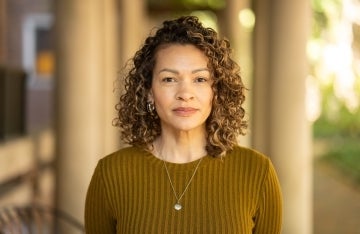Zelizer and Kraidy Published in Special ISIS-Focused Edition of Critical Studies in Media Communication
Zelizer considers Islamic State's journalistic style, and Kraidy explores Islamic State's use of images.

Photo credit: Martin Sanchez / Unsplash
Out this month, a special edition of Critical Studies in Media Communication examines the Islamic State (also known as ISIS, ISIL, and DAESH) and the discourses that help create and sustain its power and the fear it instills around the globe. The issue includes articles written by Annenberg School professors Barbie Zelizer and Marwan M. Kraidy.
The Raymond Williams Professor of Communication, Zelizer considers how U.S. media and Islamic State propaganda share a journalistic style in her paper entitled “Cold War Redux and the News: Islamic State and the U.S. Through Each Other’s Eyes.”
A former journalist and a scholar of critical journalism studies, Zelizer applies a concept she calls “Cold War Mindedness” — reporting that relies uncritically on a mindset drawing from the Cold War period — to her analysis of the Islamic State. Part of that mindset, which she is detailing in a book-length manuscript called How the Cold War Drives the News, involves how the media shape their reportage in the midst of a conflict that is largely unseen. She points out that while the two media systems in question are extremely different, both employ similar media strategies that serve to structure the conflict, suggesting that Cold War mindedness not only affects the media of countries involved in the Cold War but extends to others as well.
Currently the director of Annenberg’s Scholars Program in Culture and Communication, Zelizer will be taking the program in a new direction this April with the launch of the Center for Media at Risk. Devoted to fostering free and critical media practice and scholarship, the Center for Media at Risk will serve as a hub for academics and journalists to jointly identify the changing parameters of political intimidation affecting media around the world, as they surface in journalism, documentary, entertainment and digital practice.
In his essay entitled “Fun Against Fear in the Caliphate: Islamic State’s Spectacle and Counter-Spectacle,” Kraidy, Anthony Shadid Chair in Global Media, Politics, and Culture at the Annenberg School, examines primary, Arabic-language, sources and uses Situationist theory to explore spectacular images produced and circulated by the Islamic State and its critics.
A global communication expert, Kraidy considers the connection between fun and fear and argues that the Islamic State’s use of spectacle has power to exploit global media. This power – and how it is employed by the Islamic State – provides much of what makes the Islamic State the world’s current existential threat. Kraidy also examines the use of counter-spectacle by various Arab media, positioning the challenge of combating the Islamic State.
Kraidy is currently the recipient of an Andrew Carnegie Fellowship, which funded the research for the book project that generated this essay. He is the director of the Center for Advanced Research in Global Communication (CARGC) at Annenberg. CARGC is an institute for advanced study on global communication and public life, grounded in a vision of “inclusive globalization” that embraces the diversity of global media, politics, and culture. For the past two years, Kraidy has convened a CARGC research group called JINCS (Jihadi Networks of Culture and Communications), publishing a series of essays on "ISIS Media." The group’s work culminates in a major conference, “Mediating Islamic State,” to be held at CARGC this April.



